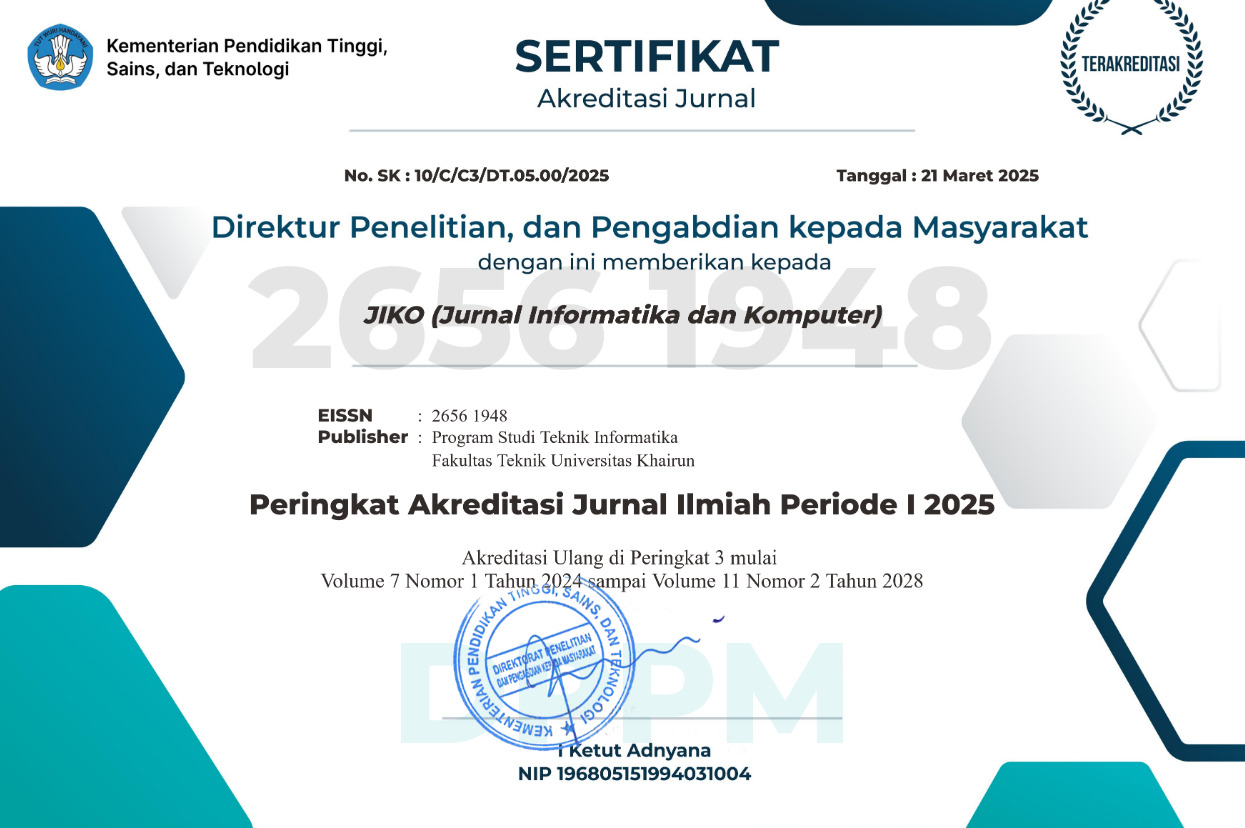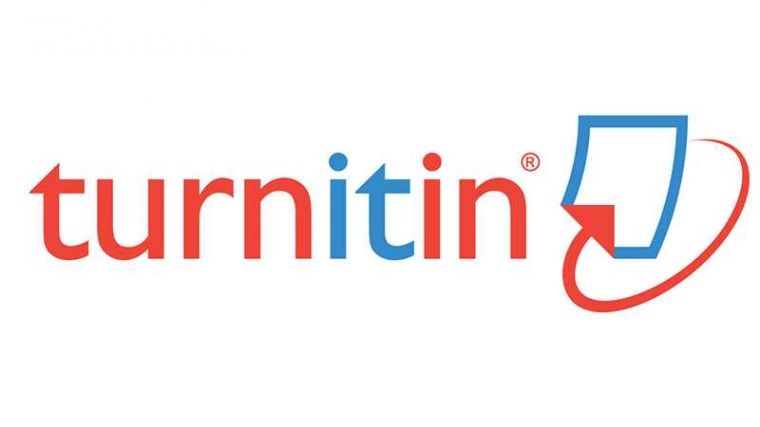DEVELOPING ENTERPRISE ARCHITECTURE FOR BPRACO SMEs DIGITAL TRANSFORMATION BY USING TOGAF 10
Abstract
Organizations must embrace emerging technology through Digital Transformation (DT) to remain competitive in the digital revolution era. While previous research has highlighted the critical role of DT strategy and architecture in driving DT success in large banks, these insights have not been thoroughly tested in small-scale banks. Small and medium-sized enterprise (SME) banks like BPR often encounter significant challenges in the DT journey, including limited infrastructure, reliance on outdated and poorly integrated systems, and slow technology adoption. These barriers hinder their ability to support the DT initiatives necessary for thriving in the digital age. This study aims to develop an enterprise architecture blueprint tailored to support DT in BPRACo, an SME-scale bank. The research follows a five-stage Design Science Research (DSR) methodology, encompassing problem explication, requirement specification, design and development, demonstration, and evaluation. Data were collected through semi-structured interviews, validated through document triangulation, and analyzed using the TOGAF 10 framework, covering phases from preliminary planning to migration. The resulting blueprint was integrated into BPRACo's DT Strategy for 2024-2026. This research enhances the understanding of enterprise architecture's role in DT within the context of SME banks. It offers practical guidance for BPRACo and similar institutions to implement prioritized enterprise architecture artifacts, facilitating a successful DT journey.
Full Text:
PDFReferences
K. S. R. Warner and M. Wäger, “Building dynamic capabilities for digital transformation: An ongoing process of strategic renewal,†Long Range Plann., vol. 52, no. 3, pp. 326–349, Jun. 2019, doi: 10.1016/j.lrp.2018.12.001.
C. Gong and V. Ribiere, “Developing a unified definition of digital transformation,†Technovation, vol. 102, p. 102217, Apr. 2021, doi: 10.1016/j.technovation.2020.102217.
Y. Gong, J. Yang, and X. Shi, “Towards a comprehensive understanding of digital transformation in government: Analysis of flexibility and enterprise architecture,†Gov. Inf. Q., vol. 37, no. 3, p. 101487, Jul. 2020, doi: 10.1016/j.giq.2020.101487.
R. Mulyana, L. Rusu, and E. Perjons, “IT Governance Mechanisms Influence on Digital Transformation: Systematic Literature Review,†27th Annu. Am. Conf. Inf. Syst., pp. 1–10, 2021.
S. De Haes, L. Caluwe, T. Huygh, and A. Joshi, Governing digital transformation. 2020. [Online]. Available: https://link.springer.com/content/pdf/10.1007/978-3-030-30267-2
R. Mulyana, L. Rusu, and E. Perjons, “IT Governance Mechanisms that Influence Digital Transformation: A Delphi Study in Indonesian Banking and Insurance Industry,†Pacific Asia Conf. Inf. Syst. (PACIS), AI-IS-ASIA, pp. 1–16, 2022.
R. Mulyana, L. Rusu, and E. Perjons, “How Hybrid IT Governance Mechanisms Influence Digital Transformation and Organizational Performance in the Banking and Insurance Industry of Indonesia,†in International Conference on Information Systems Development (ISD), 2023, pp. 1–12.
I. Santosa and R. Mulyana, “The IT Services Management Architecture Design for Large and Medium-sized Companies based on ITIL 4 and TOGAF Framework,†Int. J. Informatics Vis., vol. 7, no. 1, pp. 30–36, 2023, doi: http://dx.doi.org/10.30630/joiv.7.1.1590.
F. Luthfia, R. Mulyana, L. Ramadani, P. Studi, S. Informasi, and F. R. Industri, “ANALISIS PENGARUH TATA KELOLA TI TERHADAP TRANSFORMASI DIGITAL DAN KINERJA BANK B,†vol. 4, no. 2, pp. 100–116, 2022.
T. Z. Nurafifah, R. Mulyana, and L. Abdurrahman, “Pengujian Model Pengaruh Tata Kelola TI Terhadap Transformasi Digital dan Kinerja Bank A,†J. Inf. Syst. Res., vol. 4, no. 1, pp. 73–82, 2022, doi: 10.47065/josh.v4i1.2257.
N. Afifah, R. Mulyana, and L. Abdurrahman, “Survey of IT Governance Influence on Digital Transformation and Bank Organization Performance,†J. Sist. Inf., vol. 11, no. 3, pp. 749–760, 2022, [Online]. Available: http://sistemasi.ftik.unisi.ac.id
B. D. Tarbiyatuzzahrah, R. Mulyana, and A. F. Santoso, “Penggunaan COBIT 2019 GMO dalam Menyusun Pengelolaan Layanan TI Prioritas pada Transformasi Digital BankCo,†JTIM J. Teknol. Inf. dan Multimed., vol. 5, no. 3, pp. 218–238, 2023, doi: 10.35746/jtim.v5i3.400.
A. F. S. Yusnia Wilujeng Dwi Milenia Dewi, Rahmat Mulyana, “Penggunaan COBIT 2019 I&T Risk Management untuk Pengelolaan Risiko Transformasi Digital BankCo,†Jutisi J. Ilm. Tek. Inform. dan Sist. Inf., vol. 12, no. 3, pp. 1366–1380, 2023, doi: 10.35889/jutisi.v12i3.1488.
A. Rahmadana, R. Mulyana, and A. F. Santoso, “Pemanfaatan COBIT 2019 Information Security Dalam Merancang Manajemen Keamanan Informasi Pada Transformasi BankCo,†Jutisi J. Ilm. Tek. Inform. dan Sist. Inf., vol. 12, no. 3, pp. 1226–1239, 2023, doi: 10.35889/jutisi.v12i3.1513.
N. Riznawati, R. Mulyana, and A. F. Santoso, “Pendayagunaan COBIT 2019 DevOps dalam Merancang Manajemen Pengembangan TI Agile pada Transformasi Digital BankCo,†SEIKO J. Manag. Bus., vol. 6, no. 2, pp. 2023–223, 2023, doi: https://doi.org/10.37531/sejaman.v6i2.5519.
R. Mulyana, L. Rusu, and E. Perjons, “Key Ambidextrous IT Governance Mechanisms for a Successful Digital Transformation: Case Study of Bank Rakyat Indonesia (BRI),†Digit. Bus., vol. 4, no. 2, p. 100083, 2024, doi: 10.1016/j.digbus.2024.100083.
R. Mulyana, L. Rusu, and E. Perjons, “Key Ambidextrous IT Governance Mechanisms Influence on Digital Transformation and Organizational Performance in Indonesian Banking an Insurance Industry,†Pacific Asia Conf. Inf. Syst., no. July, 2024, doi: 10.62036/isd.2023.33.
R. Siregar and E. Sudarmanto, “Beyond Traditional Boundaries: Embracing Digital Transformation for Enhanced Management Efficiency at Micro and Small Business Enterprises,†West Sci. Interdiscip. Stud., vol. 01, no. 06, pp. 267–279, 2023, doi: https://doi.org/10.58812/wsis.v1i6.99.
A. Syahruni Qotrunnisa, “Model Arsitektur Layanan Administrasi Pemerintahan Sistem Pemerintahan Berbasis Elektronik (Spbe) Pemerintah Daerah Kuningan,†JIKO (Jurnal Inform. dan Komputer), vol. 4, no. 3, pp. 187–192, 2021, doi: 10.33387/jiko.v4i3.3424.
L. Alfaro-Mendoza and I. Aguilar-Alonso, “Brief Results of Factors and Enterprise Architecture Frameworks Influencing SMEs Adoption,†in In 2020 IEEE Congreso Bienal de Argentina (ARGENCON) , Institute of Electrical and Electronics Engineers Inc., Dec. 2020, p. (pp. 1-6). IEEE. doi: 10.1109/ARGENCON49523.2020.9505414.
Google, Temasek, and B. Company, “e-Conomy SEA 2020: At Full Velocity,†Resilient and Racing Ahead, no. Diakses pada 2023-11-20, 2020, Accessed: Nov. 20, 2023. [Online]. Available: https://www.bain.com/insights/e-conomy-sea-2020/
POJK, “Peraturan Otoritas Jasa Keuangan Republik Indonesia Nomor 62 /POJK.03/2020 Tentang Bank Perkreditan Rakyat,†no. Diakses pada 23-11-2023, 2020, [Online]. Available: https://www.ojk.go.id/id/regulasi/Documents/Pages/Bank-Perkreditan-Rakyat/pojk 62-2020.pdf
OJK, “Master Plan Sektor Jasa Keuangan Indonesia 2021-2025,†no. Diakses pada 25-01-2023, 2021, [Online]. Available: https://ojk.go.id/id/berita-dan-kegiatan/publikasi/Pages/Master-Plan-Sektor-Jasa-Keuangan-Indonesia-2021-2025.aspx
OJK, “Surat Edaran Otoritas Jasa Keuangan Nomor 15 /SEOJK.03/2017 Tentang Standar Penyelenggaraan Teknologi Informasi Bagi Bank Perkreditan Rakyat,†no. Diakses pada 01-02-2023, pp. 1–11, 2017, [Online]. Available: https://ojk.go.id/id/kanal/perbankan/regulasi/surat-edaran-ojk/Pages/Surat-Edaran-Otoritas-Jasa-Keuangan-Nomor-15-SEOJK.03-2017-.aspx
POJK, “Peraturan Otoritas Jasa Keuangan Nomor 75 /POJK.03/2016 Tentang Standar Penyelenggaraan Teknologi Informasi Bagi Bank Perkreditan Rakyat Dan Bank Pembiayaan Rakyat Syariah.,†no. Diakses pada 01-02-2023, 2016, [Online]. Available: https://ojk.go.id/id/kanal/perbankan/regulasi/peraturan-ojk/Pages/POJK-tentang-Standar-Penyelenggaraan-Teknologi-Informasi-bagi-Bank-Perkreditan-Rakyat-dan-Badan-Pembiayaan-Rakyat-Syariah.aspx
UU RI P2SK, “Undang-Undang Republik Indonesia Nomor 4 Tahun 2023 Tentang Pengembangan Dan Penguatan Sektor Keuangan,†Negara Republik Indones., vol. 1, no. 163979, pp. 1–527, 2023.
S. Kotusev, “Enterprise architecture and enterprise architecture artifacts: Questioning the old concept in light of new findings,†J. Inf. Technol., vol. 34, no. 2, pp. 102–128, 2019, doi: 10.1177/0268396218816273.
W. F. M. Haryono, R. Mulyana, and N. Ambarsari, “Perancangan Information System Architecture Menggunakan Togaf Adm Pada Fungsi Promosi,†Fountain Informatics J., vol. 5, no. 1, pp. 1–8, Dec. 2019, doi: 10.21111/fij.v5i1.3312.
The Open Group, “TOGAF® Standard — Introduction and Core Concepts,†Open Gr. Stand., pp. 1–550, 2022.
A. R. Hevner, S. T. March, J. Park, and S. Ram, “Design Science in Information Systems Research,†Source MIS Q., vol. 28, no. 1, pp. 75–105, 2004.
M. Denscombe, The Good Research Guide for Small-Scale Social Research Projects. McGraw-Hill Education (UK)., 2010. [Online]. Available: https://search.worldcat.org/title/good-research-guide-for-small-scale-social-research-projects/oclc/702134616
P. I. Fusch and L. R. Ness, “Are we there yet? Data saturation in qualitative research,†Qual. Rep., vol. 20, no. 9, pp. 1408–1416, 2015, doi: 10.46743/2160-3715/2015.2281.
BPRACo, “Transcript of Interview with BPRACo,†2024.
J. Qi, X. Ma, L. Li, and F. Wang, “Multi-stage TOGAF architecture development method adaption in small-and-medium enterprises -A case study in a start-up logistics service company,†in Proceedings of the 33rd Chinese Control and Decision Conference, Institute of Electrical and Electronics Engineers Inc., 2021, pp. 4106–4112. doi: 10.1109/CCDC52312.2021.9602269.
DOI: https://doi.org/10.33387/jiko.v7i3.8629
Refbacks
- There are currently no refbacks.












